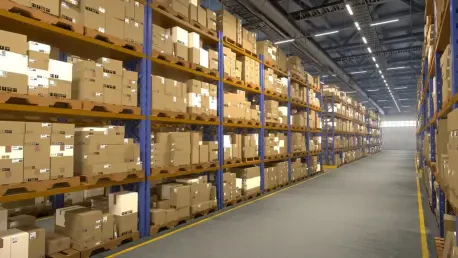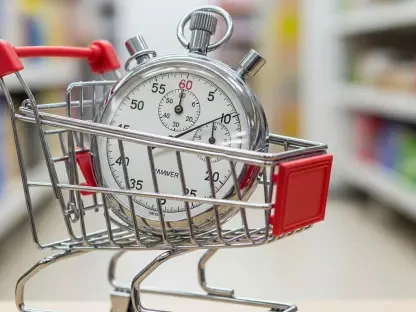Today, we’re thrilled to sit down with Zainab Hussain, a seasoned e-commerce strategist and retail expert with deep insights into customer engagement and operations management. With years of experience navigating the complexities of the consumer goods sector, Zainab offers a unique perspective on how companies like Conagra Brands tackle challenges in a volatile market. In this conversation, we dive into the hurdles of inflation and supply chain disruptions, strategies for recovery, the evolving snacks category, and the innovative approaches to balancing consumer value with business growth.
How did Conagra navigate the tough landscape of inflation and supply chain issues last year, and what were the biggest hurdles?
Last year was a real test for Conagra, with inflation driving up costs across the board and supply chain disruptions creating bottlenecks. Inflation hit hard on raw materials and production costs, forcing some tough calls on pricing to maintain margins without alienating consumers. On the supply chain side, delays and shortages led to a merchandising pullback—products just weren’t getting to shelves fast enough. It was a double whammy of higher costs and lower availability, which really squeezed the business.
What strategies is Conagra implementing to recover from these setbacks and get back to full strength?
Recovery is underway, and Conagra is taking a multi-pronged approach. They’re focusing on getting products back on shelves by stabilizing supply chains and rethinking merchandising strategies. There’s also a big push on strategic investments behind their brands to drive volume, even in a challenging consumer environment. It’s about balancing short-term fixes with long-term growth, ensuring they meet demand without overextending resources.
Can you elaborate on how Conagra is working to restore product availability after the merchandising pullback?
Absolutely. Conagra has been prioritizing supply chain stabilization, working closely with partners to streamline logistics and ensure consistent stock levels. They’ve also been recalibrating their merchandising approach, focusing on key retail channels to maximize visibility and availability. It’s a gradual process, but they’re seeing progress as products return to shelves and consumer access improves.
Let’s shift to the snacks category. What’s behind the slightly better volume performance compared to other categories Conagra operates in?
Snacks have been a bright spot for Conagra, even with pricing adjustments and shifts in promotional timing. I think it comes down to consumer behavior—snacks are often seen as affordable indulgences, so demand holds up better during economic pressure. Plus, Conagra has been smart about aligning flavors and formats with trends like on-the-go eating and wellness, which keeps them competitive in a crowded space.
Your supply chain service levels reached an impressive 98%. Can you walk us through how Conagra achieved such reliability?
Hitting 98% service levels is no small feat, especially after the disruptions they faced. Conagra focused on modernizing their supply chain, leveraging technology and process improvements to boost efficiency. They’ve also made targeted investments in key areas like production facilities, which helped ensure products are consistently available for consumers. It’s about building resilience so they’re not caught off guard again.
Inflation is still hovering around 7%. How is Conagra managing this persistent challenge across its operations?
Inflation at 7% is a significant burden, split between core inflation and tariffs. Core inflation, around 4%, drives up costs for ingredients and labor, while tariffs add another 3% to the mix, impacting imported goods. Conagra is tackling this with targeted pricing adjustments, especially in categories like canned goods and sweet treats where costs like cocoa have spiked. They’re also keeping a close eye on consumer value, ensuring price hikes don’t push away their base.
The frozen category, particularly meals with chicken and vegetables, faced setbacks in the second half of fiscal year 2025. What caused these issues, and how is Conagra addressing them?
The frozen category took a hit due to specific production challenges. For meals with chicken, stalled production led to supply shortages and lost sales, while frozen vegetables faced unexpected demand spikes that outstripped inventory. Conagra is addressing this with supply chain modernization, including upgrades to facilities like their baked chicken plants. They’re also bringing some outsourced production back in-house to cut costs and improve control.
How is Conagra adapting to the growing value-seeking behavior among consumers, especially in lower-income groups?
Conagra recognizes that value is king for many consumers right now, especially lower-income households. They’re shifting their innovation lens to focus on price-pack architecture and products that deliver superior relative value. It’s a departure from their premium-focused slate of the past decade, but it’s necessary to meet consumers where they are and drive sales through affordability and relevance.
What’s your forecast for the future of consumer behavior in the food industry, particularly around value and innovation?
I think we’re going to see value-seeking behavior stick around for a while, especially if economic pressures persist. Consumers will continue to prioritize affordability, but they’ll also expect innovation—think smaller pack sizes, budget-friendly options, and products that balance health and indulgence. Companies like Conagra will need to keep adapting, using data and tech to predict trends and deliver what consumers want before they even ask for it. It’s an exciting, if challenging, space to watch.









